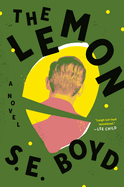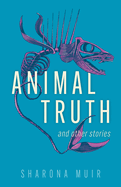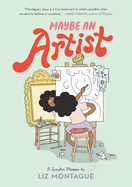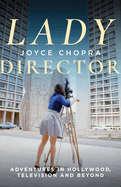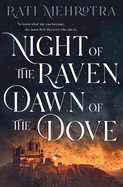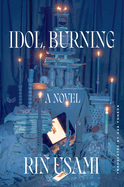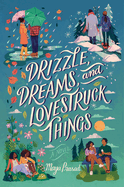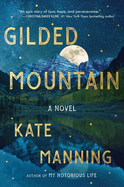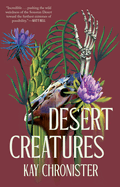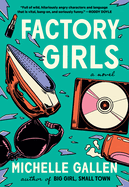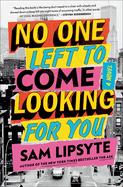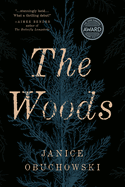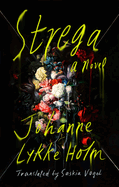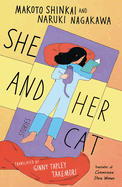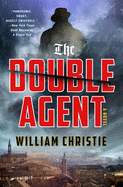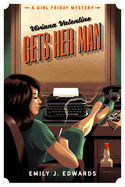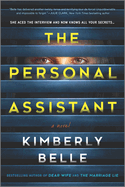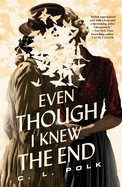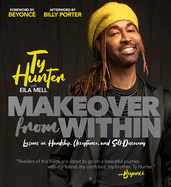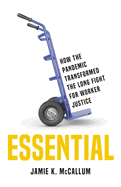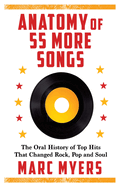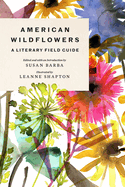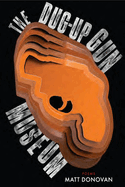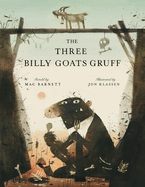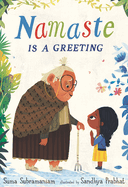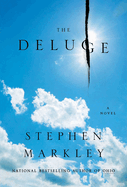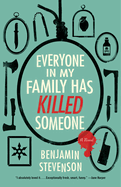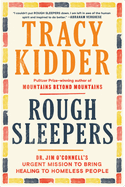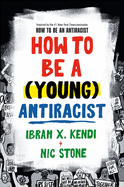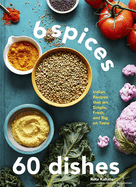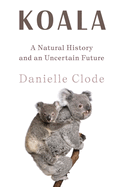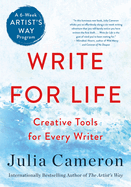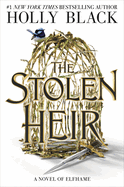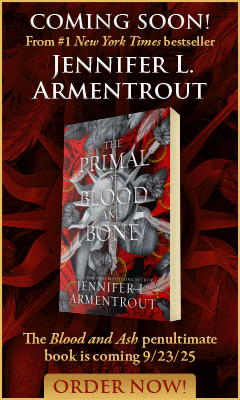Week of Friday, December 16, 2022
Among the 25 books reviewed this week: The Lemon, S.E. Boyd's "frequently brilliant" debut, a "full-bore spoof of monetization mania and foodie culture"; Animal Truth and Other Stories, "six spellbinding eco-fablist stories" from poet, novelist and short story writer Sharona Muir; and Maybe an Artist, "a humorous and touching graphic memoir about self-doubt and finding her calling" from New Yorker cartoonist and creator of the Liz at Large cartoon series Liz Montague. Plus so many more!
In The Writer's Life, best friends and fellow Caldecott Honor artists Juana Martinez-Neal and Molly Idle discuss their first collaboration, for the text of Julie Fogliano's I Don't Care, and how their art styles and approaches to life influenced each other's process.
The Lemon
by S.E. Boyd
As The Lemon begins, John Doe, world-traveling chef and food showman, dies by his own hand in his Belfast hotel room. His hanging death isn't suspicious, nor is it a murder dressed up to look like a suicide. Yet this frequently brilliant and, despite its bleak central plot point, hilarious novel--the maiden voyage of S.E. Boyd, a pseudonym of journalists Kevin Alexander and Joe Keohane and editor Alessandra Lusardi--has the feel of a mystery. It's populated with a clutch of scheming individuals whose lives are potentially altered for the better by John's death.
Hotel employee Charlie McCree finds John's body, but not just John's body: he also happens upon chef Paolo Cabrini, owner of a prestige-dripping New York restaurant. Paolo is standing before the corpse of his best friend and doing something innocent that nevertheless, he recognizes, looks compromising. Out comes Charlie's camera phone. Paolo gives Charlie some cash for his silence and an enthusiasm-free invitation to look him up should Charlie ever find himself in New York.
Then there's the fallen food star who gave John his start and figures he's in a prime position to take over the dead man's television show. There's John's shrewd but weary agent, who's doing damage control but also looking out for her own hide. Every story line offers suspense and surprises, and the book's deadpan humor is unremitting. The Lemon is a full-bore spoof of monetization mania and foodie culture, and through it all, the specter of the late Anthony Bourdain, whose profile shares similarities with John Doe's, doesn't hover over the story so much as saunter alongside it. --Nell Beram, author and freelance writer
Discover: Despite its bleak central plot point--a world-traveling chef dies by suicide--this frequently brilliant debut novel is a hilarious spoof of monetization mania and foodie culture.
Idol, Burning
by Rin Usami, transl. by Asa Yoneda
Rin Usami's 2019 debut novel, Kaka, made her the youngest recipient of the prestigious Yukio Mishima Prize. Her intriguing follow-up, Idol, Burning, published in 2020 when Usami was just 21, garnered the Akutagawa Prize, one of Japan's highest literary honors.
Youth is at the center of Usami's disturbing narrative, which highlights a 16-year-old's withdrawal from family, school and eventually the rest of reality. Akari--a name that means "light," "bright"--is a high school student who effectively disappears into the all-consuming void of obsessive fandom. Her sole reason for living is to support her "oshi"--the titular idol, Masaki Ueno, a former child star who is now part of a coed music group called Maza Maza. Akari has never actually met him, but she's learned every detail of his personal life and career, compiled his videos and interviews, analyzed every bit of news about him--including the latest allegation that he assaulted a female fan. With unflinching clarity, Usami expertly transforms Akari's devotion into debilitating disconnection.
Asa Yoneda translates from the Japanese for Usami's U.S. debut. Yoneda's thoughtful note at the novel's end skillfully augments the narrative with historical and cultural revelations that might not be obvious to non-Japanese audiences. Black-and-white drawings by Leslie Hung introduce unnamed chapters, meant to "capture the quiet moments of loneliness that Akari experiences," Hung writes in her own afterword. Pair Idol, Burning with Mieko Kawakami's All the Lovers of the Night or Sayaka Murata's Convenience Store Woman for haunting, enhanced understanding of social detachment and contemporary malaise. --Terry Hong, Smithsonian BookDragon
Discover: A poignant, disturbing international bestseller from Japan exposes teenage detachment and isolation in the frenetic world of obsessive fandom.
Gilded Mountain
by Kate Manning
Gilded Mountain by Kate Manning (Whitegirl; My Notorious Life) is an expansive novel of passions: love, beauty and suffering; struggles for labor rights, women's equality and the rights of formerly enslaved people. Set in the early-1900s Colorado mountains, this enthralling story stars Sylvie Pelletier, who travels west at age 17 to find the world broader, more lovely and more terrible than she'd imagined. Gilded Mountain tracks her coming of age and the troubles of her family and the marble miners of Moonstone.
Sylvie's father, Jacques, is beloved by his family and his coworkers in the marble quarry, who call him "Frenchy," but Sylvie's mother fears he will again meet danger with his union organizing. Sylvie graduates from high school and apprentices as "printer's devil" to the freethinking K.T. Redmond, who further shocks townspeople by being a newspaperwoman. As conditions in the mines deteriorate and K.T. nurtures Sylvie's rebellious streak, the young protagonist is also invited into the household of Company owner Duke Padgett and his wife, the Countess, a place where Sylvie will be torn between her principles and love for her family, her class and her boss, and the temptations of the other life.
Gilded Mountain is an ambitious novel, swelling to encompass labor rights, women's rights, the societal role of the free press, the rights of Black Americans immediately following the Civil War, lynching, immigration and more. The result is a painfully beautiful novel of big ideals, heartbreaks and tragedies, sewn together by an admirable and unforgettable heroine. --Julia Kastner, librarian and blogger at pagesofjulia
Discover: This gorgeously evocative novel of the early-1900s American West takes on issues of race, class, labor and women's rights via a remarkable young woman's coming of age.
Desert Creatures
by Kay Chronister
Desert Creatures, the debut novel from genre short fiction writer Kay Chronister, is an immersive, near-future horror story that delivers a startling portrait of an American West ravaged by ecological disaster. Nine-year-old Magdala does not seem made for this world. Born with a clubfoot, she's always been dependent on her kindhearted father, Xavier. After embarking on an ill-fated pilgrimage to Las Vegas where she and Xavier hope for a miracle to fix her foot, Magdala loses all she holds dear. Afterward, she is left to survive years alone in the desert, hardening herself to the impossible conditions of her world. With new determination, Magdala takes an exiled priest, Elam, hostage; Elam is her guide to finish, by any means possible, her journey to Las Vegas.
Chronister's futuristic, dog-eat-dog Sonoran and Mojave deserts are as devastating as they are inventive, populated with traumatized individuals as well as surreal creatures that rage with a mysterious sickness. The most uncanny element of this atmospheric setting is not Chronister's impeccably detailed rendering of it but rather its unsettling resemblance to a future easily imagined, one dominated by paranoia and consumer competition. But Magdala's world is one of minor miracles as much as it is one of grand-scale destructions. Though the landscape is bleak, Chronister's heroic protagonists square off against gun-toting villains, providing a vision of near-legendary hope. Magdala, Elam and others grapple with what kinds of salvation remain possible in such a world, as Chronister cleverly deploys and subverts horror, dystopian and western genres alike in this razor-sharp novel. --Alice Martin, freelance writer and editor
Discover: A kaleidoscope of horror and hope, Desert Creatures is a debut dystopian novel, both eco-critical and feminist, that will wow readers with its range.
Factory Girls
by Michelle Gallen
With Factory Girls, Michelle Gallen (Big Girl, Small Town) delivers a heartrending, funny, blistering and beautiful novel of foreboding and hope. In the summer of 1994, Maeve Murray and her two best friends are on the cusp of escaping their small Northern Irish town for bigger, better and safer things. Maeve is a child of the Troubles: "neighbours shooting neighbours was just the way things had always been for her." She comes from a poor Catholic family and has been taught to expect little, but she has hopes that her exam results will move her beyond the background that, in her world, defines her. Maeve and her friends Caroline and Aoife find summer jobs at a shirt factory in town, hoping to save a bit before going away to college. Exam results loom all summer, in this novel organized by a countdown beginning "74 days until results."
Caroline has a loving family, and Aoife is downright privileged compared to Maeve's rather stark upbringing, not only in poverty but with the death of her sister shadowing all her family's interactions. Factory work is a bit of a miracle in this depressed town, but it comes with unforeseen challenges, like working alongside Protestants, while outside the gates a never-ending war of retaliation is played out by paramilitary groups on both sides.
Factory Girls may sound like a heavy, ambitious novel, but Gallen draws delightful, richly rendered characters and imbues her narrative with a vernacular voice that will charm readers and keep them firmly rooted in time and place. This novel is as hilarious as it is heartbreaking: not to be missed. --Julia Kastner, librarian and blogger at pagesofjulia
Discover: Amid the Troubles in Northern Ireland, a scrappy young woman comes of age in this inspiring, humorous and moving novel.
No One Left to Come Looking for You
by Sam Lipsyte
Sam Spade was searching for the Maltese falcon; Jack Shit (né Jonathan Liptak), from the punk band the Shits, is searching for his Fender Jazz bass. With No One Left to Come Looking for You, Sam Lipsyte has written a novel firmly in the noir tradition and fused it with satire in such a way that he makes pairing crime fiction with comedy seem as natural as pairing a Gibson Les Paul with a Marshall stack.
It's January of 1993, Manhattan's East Village is gentrifying, and the Earl, narrator Jack's bandmate and roommate, has run off with Jack's prized possession, presumably to sell it for drug money. How does Jack know that the Earl stole his bass? Through a phone call from Jack's friend at King Snake Guitars, where the Earl tried unsuccessfully to sell the instrument.
Things get darker fast, but they never stop being funny. There's Jack's Spinal Tap-ian overblown sense of importance ("We have a pretty huge following in Catalonia"). There are some brilliant song titles ("Orange Julius Rosenberg," "Salad of the Bad Cafe") and hilarious lyrics not fit to print here. No One Left to Come Looking for You is a twisty caper, a reverberant period piece and an affectionate parody of the youthful quest for authenticity. (Jack, who frets that having gone to college threatens his legitimacy as a punk, wears the fact that Lou Reed studied poetry at Syracuse University like armor.) While Lipsyte (The Fun Parts; Hark) never swerves into mean-spiritedness, a running gag involving Hall and Oates comes smile-makingly close. --Nell Beram, author and freelance writer
Discover: Set in Manhattan's East Village punk scene in 1993, this novel is a twisty caper, a reverberant period piece and an affectionate parody of the youthful quest for authenticity.
The Woods
by Janice Obuchowski
In The Woods, a collection of loosely linked short stories, short fiction writer Janice Obuchowski weaves the poignant private lives of characters residing in a small Vermont college town. In "The Chair," a woman grapples with aging and the shifts in her marriage as she looks for a new home for a long-ago wedding gift. The couple in "Potions" must face the fallout of an affair while their daughter plays make-believe in the yard. Two siblings find themselves up against a mysterious, monstrous force in their grandmother's woods while staying with her to escape their feuding parents in "Monsters": "I think the world is even worse than we imagine it," says Ben to his sister.
Each story in Obuchowski's collection, carefully paced and keenly observed, takes a close and compassionate look at the supposedly bucolic lifestyles of those living in a quaint town and unearths the emotional fault lines that undergird ordinary life. Stories like "The Cat," "The Chair" and "Mountain Shade" take a more contemplative approach to this subject, using everyday activities to illuminate past and present griefs with nuance and patience. Stories such as "Potions" and "Monsters" stand out for the way they interweave these quiet dramas with the shadowy and evocative mystery of the woods. Such tales are particularly adept at harnessing the power of the collection's setting, which is at once beautiful and lonely. With hints of dark fairy tales and grim truths that are unable to be faced, these stories marry unsettled imaginings to those that are heart-wrenchingly real. --Alice Martin, freelance writer and editor
Discover: Filled with emotional insights and atmospheric detail, The Woods is a poignant story collection that employs its immersive setting to perfection.
Strega
by Johanne Lykke Holm, transl. by Saskia Vogel
Johanne Lykke Holm's first novel in English, Strega, is a fever dream meditation on girlhood, female friendships and unnamed dangers.
Rafaela is 19 years old when she leaves her parents' home and travels into the mountains to work as a maid at an old hotel, with eight other girls her age. They clean and polish and set tables for every meal; they wash sheets and dress in clean uniforms, but no guests arrive. Lounging together, sharing cigarettes and liqueurs and candies, they are immediately close. Their matronly bosses are strict, even punitive, but their days still feel relaxed and without energy, emphasizing the pointlessness of their work. The hotel was once a shocking red, fading to pink against the forests; the strangely sinister neighboring nuns call it Il Rosso. Rafa calls it "a morgue beneath the trees." When listless summer turns to fall, the hotel throws a party, and one of the nine girls disappears.
The remaining eight girls search for her; her parents appear to claim her possessions; the barren season at the hotel stretches on. In one of Strega's figurative turns, the missing girl--presumed murdered--comes to stand in for female victims of unspecified violence. Holm's prose, translated from the Swedish by Saskia Vogel, is hypnotic, dreamlike and favors repetition in phrasing and images: "Our hands would repeat the same movements... our hands always repeated the same movements." The novel is short and spare, but unwavering in its intensity. Strega is riveting: surreal, ominous, somehow both vague and sharp in its observations about the harms that girls submit to when they become women. --Julia Kastner, librarian and blogger at pagesofjulia
Discover: In mesmerizing, allegorical storytelling, nine maids at a mountain hotel consider the violence the world offers them when one suddenly disappears.
She and Her Cat: Stories
by Makoto Shinkai and Naruki Nagakawa, transl. by Ginny Tapley Takemori
She and Her Cat offers a quartet of imaginative, deeply affecting stories of magical realism written by Naruki Nagakawa and based on an original story by Japanese director, producer and manga artist Makoto Shinkai. The book is alternately narrated by multiple generations of isolated Japanese women who face loss and the neighborhood cats who come to love them.
In "Sea of Words," a street cat is rescued by a single gal who works for an art and design college. She names him Chobi, and the two offer each other comfort and solace. As Chobi patrols the neighborhood nightly, he meets a cast of eccentrics including Jon, a dog who is a sagacious philosopher; Mimi, a kitten; and Reina, a woman who lives nearby and feeds feral cats.
Mimi, the kitten now grown, anchors "First Blossoming," where she and Chobi meet up daily to enjoy food provided by Reina, a young artist-painter. In "Slumber and Sky," Cookie, one of Mimi's offspring, is adopted by a mother who gives the cat to her young adult daughter, Aoi, whose severe depression keeps her housebound. In the fourth story, "The Temperature of the World," a long-suffering and self-sacrificing divorcée takes in her rebellious, disillusioned nephew. His presence forces her to stand up to her domineering brother--with the help of a smart, feral, neighborhood boss cat who knows all.
Read on their own or taken as a whole, these heartfelt, insightful stories offer a thematic continuum about the quiet burdens people bear in the modern, often isolated world and how human-animal interactions enrich and embolden lives. --Kathleen Gerard, blogger at Reading Between the Lines
Discover: In these insightful, interconnected stories, challenged Japanese women are empowered by feral cats who live in their neighborhood.
Mystery & Thriller
The Double Agent
by William Christie
Alexsi Smirnov is a survivor, constantly on the verge of having his undercover identity exposed during World War II. The result would be, of course, death. But this unlikely hero knows how to protect himself. As he did in A Single Spy, the prequel that introduced Alexsi, William Christie turns around the classic espionage novel in The Double Agent by focusing on this self-proclaimed thief and delinquent whose only loyalty is to himself. Christie makes Alexsi's flaws a large part of the character's appeal.
Alexsi's actually a triple agent. The novel opens in Iran in 1943 with Alexsi warning the British about Stalin's plot to kill Churchill. A Russian orphan often in trouble with the law, Alexsi was trained by the Russian secret service and then sent to Nazi Germany, where he established himself in the German intelligence services. Christie uses Alexsi's background to show how two brutal regimes trapped an ordinary person. Rather than receiving gratitude for saving Churchill, the British want him to spy for them, and they give him a new identity and send him to Rome as a sergeant at German SS headquarters. Alexsi's myriad near-brushes with being uncovered are heart-stopping as he relies on his finely tuned and constantly evolving instincts.
Christie dramatizes a pivotal moment during World War II, one with control of the Vatican and northern Italy at stake. He skillfully weaves real events and historical figures through the thrilling plot of The Double Agent. --Oline H. Cogdill, freelance reviewer
Discover: This tense World War II thriller focuses on an unlikely spy forced to work at various times for Russia, Germany and England--but whose only loyalty is to himself.
Viviana Valentine Gets Her Man
by Emily J. Edwards
Viviana Valentine, after escaping her too-small hometown, finds that she adores her job as secretary-cum-girl-Friday to New York's top private eye, the tough-talking Tommy Fortuna. But when Viv finds a body in the office and Tommy disappears--right after taking on a sensitive assignment for wealthy businessman Tallmadge Blackstone--Viv must marshal her wits to solve the case before she gets bumped off. Viviana Valentine Gets Her Man, Emily J. Edwards's debut and Girl Friday Mystery series opener, takes readers on a highly enjoyable romp through 1950s Manhattan in the company of a plucky heroine.
The narrative, told in Viv's snappy first-person voice, jumps from the Chelsea boardinghouse where Viv lives with several girlfriends to the posh Upper East Side residence of the Blackstone family. As she befriends (somewhat to her own surprise) Blackstone's grown daughter, Tallulah, Viv digs for clues as to who attacked the mystery man, why Tommy skipped town and whether the two things are related. Included in the mix are Viv's housemates and several cops, ranging from the handsome Alan Leary to the disagreeable Detective Jake Lawson, each with their own means and methods for solving the case.
Edwards packs her narrative with plenty of mid-century detail, from Viv's saddle shoes and smart dresses to the Cadillac convertible Tallulah takes for a joyride. Though the dialogue sometimes contains one too many hardboiled catchphrases of the '50s, the mystery is satisfyingly twisty. Its conclusion allows both Viv and her readers to savor the pleasures of a case neatly tied up--and to look forward to further adventures. --Katie Noah Gibson, blogger at Cakes, Tea and Dreams
Discover: A resourceful secretary investigates a murder to clear her absent boss's name in this enjoyable 1950s romp.
The Personal Assistant
by Kimberly Belle
Fame is fleeting, especially when being a celebrity is tied to one's social media presence. One false word, one odd posting can take a person from being famous to infamous, a pariah on myriad platforms, as Kimberly Belle (My Darling Husband; Dear Wife; The Marriage Lie) shows in her eighth engrossing novel. The Personal Assistant soars with authentic characterizations and a tightly coiled plot that offers a fresh spin on the domestic thriller.
Instagram influencer Alex Hutchinson finally amassed one million followers with her snippets about family life, including stories about her twin daughters, and frequent motivational messages, posted as Unapologetically Alex. She heavily relies on her personal assistant, known as AC, whose skills and research seem impeccable. Alex also drinks a lot, but her latest night of too much tequila may end her career. Her post, which she doesn't remember writing, slams a former Disney star now known for her bad behavior. The trolls descend, angry that Alex so nastily took after a teenager instead of offering support. Unapologetically Alex now has much to apologize for as her followers dwindle, and she and her family receive death threats. Alex needs help in forming a response in the name of damage control--but AC disappears.
Belle shapes The Personal Assistant with believable twists as Alex wonders what AC's motive was in working for her, particularly when the police can't confirm the young woman's identity. "Perception is reality," says Alex, Belle skillfully blurring the line between facts and lies. The ingenious plot has Alex questioning what she holds sacred, including her marriage and career. --Oline H. Cogdill, freelance reviewer
Discover: This tightly coiled thriller follows an Instagram influencer's turn from media darling to pariah after a nasty post she doesn't remember writing and her trusted assistant vanishes.
Science Fiction & Fantasy
Animal Truth and Other Stories
by Sharona Muir
In Animal Truth and Other Stories, poet, novelist and short story writer Sharona Muir (Invisible Beasts) offers six spellbinding eco-fablist stories. In "Bedcrumbs," a nameless narrator meditates on the nearly invisible biological minutia that connect us all. "The Bath of Venus" finds a wealthy time-traveler in the deep past, making an unexpected connection with a creature of an unknown species. And in the titular "Animal Truth"--more novella than short story--a scientist on the brink of a discovery about a rare fish takes a closer look at her past and what is expected of mothers. The collection's standout story proves to be "Menu: Extinction," in which an experimental artist becomes obsessed with the strange smell his pregnant wife is emitting while he works on a disturbing new exhibit.
While Muir's handling of this material can be whimsical and playfully eccentric, Animal Truth more frequently embraces the moments when the mythical or mystical qualities of her creations illuminate the bittersweet or even chilling elements of the world or a character's psyche. The horror of "Menu: Extinction," for example, is a gradual, creeping kind of dis-ease that, like the "pungent aromatics" of the artist's wife, lingers throughout the story before washing over the reader in force at its end. Meanwhile, the "burbling tanks" of Jo's specimens in "Animal Truth" echo the "sadness [sighing] louder than usual in the eaves of her mind," allowing her experience of pregnancy and birth to become aligned with the aquatic sensation of deep submersion. By the end of Muir's collection, readers, too, will feel submerged in an unfamiliar world that uncannily resonates with their own. --Alice Martin, freelance writer and editor
Discover: Animal Truths and Other Stories is a collection of six intimate, magical realist stories with an ecological bent, as patient and poignant as they are unsettling and fascinating.
Even Though I Knew the End
by C.L. Polk
C.L. Polk (The Midnight Bargain; Witchmark) blends the textured worldbuilding of a fantasy and the intrigue of a gritty noir in Even Though I Knew the End. Elena Brandt has three days left to live before the devil claims her soul in return for a deal she made 10 years ago. Her affairs are in order, and she has time for one last job to pad the savings she plans to leave to the woman she loves. Edith has no idea that she won't be able to follow her dream of leaving Chicago with Elena and moving out west. Elena's job turns out to involve ritual sacrifices beyond anything she can handle, having been exiled from magical society as a warlock, but when she refuses the job, her client reveals that she's the demon who owns her debt. If Elena can identify and locate the White City Vampire, her soul will be her own again. And the search may not be that hard: there's reason to believe Elena is the next target.
This slim novella captures the atmosphere of the 1940s and is packed with detailed character development, particularly in fierce, tender and devoted Elena, who is willing to put her soul on the line for Edith, the love of her life, or her estranged brother, Teddy. This bittersweet period piece delivers heart-wrenching hope and tragedy in a compact package. If Polk decides to further explore this world, readers will welcome it. --Kristen Allen-Vogel, information services librarian at Dayton Metro Library
Discover: This queer magical detective noir packs an emotional punch.
Biography & Memoir
Lady Director: Adventures in Hollywood, Television and Beyond
by Joyce Chopra
Before Nora Ephron and Nancy Meyers directed their first features, there was Joyce Chopra. She's not a household name like Ephron and Meyers, but Lady Director: Adventures in Hollywood, Television and Beyond affirms that Chopra was a boundary breaker and that the story of a jagged career path can be much more interesting than the story of a steady ascent.
Chopra, who was born in 1936, had a middle-class childhood in Brooklyn before she attended Brandeis University, after which, beguiled by cinema, she resolved to work in film. Set on doing features, she began with documentary work, zigging and zagging professionally until she realized her ambition: 1985's Smooth Talk, which won Sundance's Grand Jury Prize for Best Dramatic Feature. Chopra's attempts to direct more movies fizzled and resulted in "a new phase of my directing career": a move to television at a time before "prestige" routinely appeared before the word.
Chopra relays her disappointments without handwringing, and her humility and practicality will earn her the respect of readers. (Dishy accounts of working with Diane Keaton and Vincent D'Onofrio will earn her their gratitude.) Chopra's persistence is all the more admirable given setbacks resulting from gender bias, panic attacks and grope-y industry insiders: "It was considered annoying but normal, something I had to simply accept as a woman if I wanted to work in that all male world." How fortunate for readers of Lady Director, and for every woman now in the film and television business, that she persevered. --Nell Beram, author and freelance writer
Discover: This memoir by the boundary-breaking director of 1985's Smooth Talk affirms that the story of a jagged career path can be much more interesting than the story of a steady ascent.
Makeover from Within: Lessons in Hardship, Acceptance, and Self-Discovery
by Ty Hunter and Eila Mell
Ty Hunter's buoyant personality shines brightly in Makeover from Within, a combination of a memoir and a motivational pep talk, cowritten with Eila Mell and packed with color photos. Hunter originally gained fame for his attention-grabbing work styling Destiny's Child in 1999 and, later, for working as Beyonce's stylist when she became a solo artist. In 2012, a conversation with President Barack Obama convinced him to step back and look for new challenges. He designed shirts, fitness apparel and shoes for Foot Locker, created a clothing line for Hyundai and developed a phone case designed to provide perfectly lit selfies. He also found fulfillment in motivational speaking. Sprinkled throughout the book are encouraging "Ty's Takeaways," including: "There are no rehearsals for life, so live as if the spotlight is on you" and "Dark times give you what you need to become who you were meant to be."
Hunter reveals that his life wasn't always so upbeat. Despite the strong women in his life--his mother, grandmother and great-grandmother, who supported him as a Black, gay and sensitive young man--he was plagued for years by internalized homophobia. He survived a shooting at age 20, but it took several months before he could learn to walk again. His coming out was extremely messy. In his early 20s, he was dating both a man and a woman. His worlds collided when his girlfriend got pregnant and his boyfriend began blackmailing him when he chose to stay with the baby's mother. Although his life has been littered with setbacks, Hunter's winning optimism makes this a truly inspiring memoir. --Kevin Howell, independent reviewer and marketing consultant
Discover: Makeover from Within is an empowering and uplifting pep talk and memoir.
Political Science
Essential: How the Pandemic Transformed the Long Fight for Worker Justice
by Jamie K. McCallum
During the early months of the coronavirus pandemic, essential workers in health care, food service and other industries were often applauded, sometimes literally. But the pandemic exposed the fault lines in a system designed to take advantage of low-wage workers. In his third book, Essential, sociologist and activist Jamie K. McCallum (Worked Over) delves into the struggles faced by such essential workers as a result of Covid-19, and places their strikes, protests and other actions in context of the long history of U.S. labor organizing.
McCallum begins with familiar facts: essential workers kept the country, and the world, going after millions of people were urged to stay home. Many of them--disproportionately women and people of color--were already struggling, economically and financially. He goes on to consider workers' efforts to improve their situations: striking, using unions as a tool for collective bargaining, using creative tactics to get their bosses to pay attention.
Furthermore, McCallum takes readers through the last hundred or so years of labor relations in the U.S., from well-known incidents like the Triangle Shirtwaist Factory fire to more recent events like some Amazon workers forming unions. Through research and interviews, he illuminates the experiences of grocery-store workers, health-care aides, food distributors and teachers, while calling to account the politicians who consistently siphon money away from vital industries and their workers.
Insightful, thought-provoking and peppered with helpful statistics and charts, Essential is both a clarion call to improve the lives of the working class and a primer on how their prosperity--or lack of it--is tied to the fate of all Americans. --Katie Noah Gibson, blogger at Cakes, Tea and Dreams
Discover: A veteran sociologist illuminates essential workers' struggles during the pandemic and calls for better policies to support them.
Performing Arts
Anatomy of 55 More Songs: The Oral History of Top Hits that Changed Rock, Pop and Soul
by Marc Myers
Marc Myers's follow-up to Anatomy of a Song collects 55 additional oral histories of songs that are both beloved and iconic. Each of the profiled songs are arranged chronologically. Myers (Rock Concert) first places the song's impact within its genre and shares its importance to the artist or group who recorded it. For the second part of each oral history, Myers interviews musicians, composers, producers and others who tell the story of each song's development and creation. The songs profiled range in date from 1964 (Dionne Warwick's "Walk on By" and Martha and the Vandellas' "Dancing in the Streets") to 1996 (Sheryl Crow's "If It Makes You Happy").
Joan Jett recalls "Bad Reputation" being written in a rage when--after her first group, the Runaways, disbanded--record labels were wary of her bad-girl image. Blondie cofounders Debbie Harry and Chris Stein remember adding a rap to "Rapture" in 1980. "Rap was an anomaly then," Stein notes. "It hadn't become mainstream." Discussing the difference between performing the song "Truckin'" live and recording in a studio, the Grateful Dead's Bob Weir says: "This is one of the reasons why we famously didn't make good studio records. We played too goddamn loud in there." Myers's interviews offer a wealth of fun and illuminating anecdotes for songs, including The Band's "The Weight," T. Rex's "Bang a Gong (Get It On)," Elton John's "Rocket Man," Roberta Flack's "Killing Me Softly with His Song," The Spinners' "I'll Be Around" and The Beach Boys' "Good Vibrations."
Audiophiles will love this tasty collection of oral histories of great songs, told by those who created them. --Kevin Howell, independent reviewer and marketing consultant
Discover: Marc Myers's second collection of oral histories of beloved and iconic songs presents 55 more enjoyable firsthand accounts by the artists who created them.
Poetry
American Wildflowers: A Literary Field Guide
by Susan Barba, editor, illus. by Leanne Shapton
American Wildflowers, a splendid anthology edited by poet Susan Barba (Geode), displays a range of American literature and includes essays, early travel narratives and poetry. In her introduction, Barba refers to the book as a "florilegium, the Latin word for a gathering of flowers" and notes that it's intended to "counter the 'plant blindness' of our dominant culture." Pieces are grouped by the name of the plant, accompanied by its Latin family name, making the anthology function like a field guide. A floral reference might be incidental but more often provides a central theme.
Barba showcases a range of poetic styles, from T.S. Eliot to Lucille Clifton. Lydia Davis and Mary Siisip Geniusz decry the battle to eradicate weeds. Camille Dungy makes an allegorical connection between racial homogeneity and the reduction of natural diversity. Meriwether Lewis describes the blue camas seen on his 1806 expedition. George Washington Carver's World War II-era article gives tips on preparing leaves and roots. Effusing about lilacs, Walt Whitman muses on death, as does Louise Glück in the spare poem "The Wild Iris." The "Asteraceae" section is a highlight, with poems about dandelions and sunflowers by Emily Dickinson and Allen Ginsberg and a passage from Aldo Leopold that presages the decline of native flora. Authors of color (Ross Gay, Robin Wall Kimmerer, Sandra Lim, Aimee Nezhukumatathil) feature prominently.
Leanne Shapton's watercolor illustrations, painted from pressed flowers, draw everything together into a stunning whole. As asserted in "The Rhodora" by Ralph Waldo Emerson: "beauty is its own excuse for Being." American Wildflowers is the ideal gift for bookish gardeners and nature lovers. --Rebecca Foster, freelance reviewer, proofreader and blogger at Bookish Beck
Discover: This richly illustrated anthology of 101 poetry and prose pieces rejoices in wildflowers.
The Dug-Up Gun Museum
by Matt Donovan
The poems in Matt Donovan's The Dug-Up Gun Museum are for anyone who has gathered students into a quiet corner as an administrator jiggled the handle of the door; anyone who has watched as the news unfolded the details of yet another shooting; anyone who has dropped their kids off at school, hoping they will be safe there; anyone, in fact, who lives in the United States in this era of gun violence.
Donovan attempts to capture the feelings of fear, despair and even self-reflective questioning. This vulnerability shines through in "Fake News Bus Stop Prayer," a poem of unrhymed couplets with long conversational lines. In it, a neighbor at the bus stop rants about "fake news" and the machine gun shoot he goes on each year, and the poem asks, "And yet, who am I to pretend to know nothing/ of the pleasure of ruin, especially after the Tri-County Fair,/ where I forked over a few extra bucks in order for my family to watch/ the school bus smash-up derby, where my sticky blue wristband/ proclaimed yes to wreckage, to wincing & mock groans, yes/ to a hymn of broken glass where the point was good riddance/ & to see our look-both-ways world shattered."
The collection is divided into five sections, three of which are long poems, each a different "Portrait of America as," such as the Winchester Mystery House or "a Philadelphia Derringer Abraham Lincoln Assassination Box Set Replica." The remaining two sections contain shorter poems, less stylized but all equally earnest and searching in their own way. --Sara Beth West, freelance reviewer and librarian
Discover: The Dug-Up Gun Museum confronts the issue of gun violence in a series of questioning and imaginative poems that hold a mirror to this tragic piece of history and culture in the United States.
Children's & Young Adult
Maybe An Artist
by Liz Montague
Liz Montague, New Yorker cartoonist and creator of the Liz at Large cartoon series, debuts with a humorous and touching graphic memoir about self-doubt and finding her calling.
After Montague's husband asks her a seemingly simple question--"Why do you do it?"--she becomes fixated on the answer: "Why do I do this?" She looks at her art from "back when it was all just for fun" and reminisces about childhood. Third-grade Liz "didn't really notice the direction letters faced" and often wrote backwards but found comfort in drawing. When she started to look at letters like "little pictures," she was able to correctly "make the different shapes." By the end of fifth grade, she mostly had her letters mastered and, while in middle school, "realized doodling really helped [her] think." She began illustrating her homework and succeeding both academically and athletically. However, her passion for art is shrouded by the overwhelming pressure to "get an athletic scholarship like [her] sister." Liz ultimately learns how to make sense of the world through her artwork, curiosity and creativity and uses her voice to land a job as a cartoonist for the New Yorker.
Montague balances humor and relatable topics for young people with candid thoughts and feelings about the world and how people should treat each other. The author uses her cartoon style to create colorful, expressive illustrations with tons of white space. Her art combined with the welcoming, simple text make Maybe an Artist an amusing, accessible read. --Kharissa Kenner, children's librarian, Bank Street School for Children
Discover: A hilarious and spot-on graphic memoir by Liz Montague about finding yourself and using art to share your voice with the world.
Night of the Raven, Dawn of the Dove
by Rati Mehrotra
Rati Mehrotra's first YA fantasy is set in a world inspired by medieval India and combines explosive action sequences with a thoughtful exploration of the complexity of identity and belonging.
Katyani, magically bound to the queen of Chandela since childhood, is tasked with protecting the crown prince. After "three assassination attempts, and zero leads," the queen sends the prince away to study under renowned spiritual guru Acharya Mahavir in the monster-infested forest of Nandovana. Headstrong Katyani, who is forced to go with him as bodyguard, chafes under Acharya's strict rules and wants nothing more than to return to her queen's side. She is drawn, though, to Daksh, the Acharya's son, even with "his cold demeanor." Katyani's time in Nandovana is cut short when a rival kingdom attacks Chandela. But her loyalty to the royal family is tested by a shocking revelation and Katyani must decide which side to support in the conflict.
Night of the Raven, Dawn of the Dove is ambitious and filled with grisly battles, sinister monsters and forbidden magic. The novel's brisk pacing and escalating stakes create a gripping read, while Katyani's journey of self-discovery adds a universal coming-of-age element to the epic narrative. Fans of Sabaa Tahir's An Ember in the Ashes and Kristin Cashore's Graceling should enjoy this high fantasy adventure. --Alanna Felton, freelance reviewer
Discover: A young guardswoman is caught up in the clash between warring kingdoms and monsters in this sweeping YA fantasy novel.
Drizzle, Dreams, and Lovestruck Things
by Maya Prasad
In Maya Prasad's cozy, heart-fluttering teen romance Drizzle, Dreams, and Lovestruck Things, she introduces the dynamic, adorable Singh family, a quartet of close-knit teen Desi sisters who help their twice-widowed father run a bed-and-breakfast on Orcas Island, Wash.
Each sister takes a turn in the narrative spotlight in the novel's four seasonal parts. Practical Nidhi thought she had her future and her love life settled, but a dangerous autumn storm and an attractive construction worker might change her mind. Avani still deeply grieves the death of their stepfather, whom Dad married after their mother passed away. She has to slow her racing thoughts if she wants to throw a perfect Winter Ball and make up with the crush she accidentally rejected. Shy Sirisha prefers to watch spring unfold through her camera's viewfinder until she meets a beautiful actress who makes her want to find her voice. Romance novel reader Rani gets caught up in a Bollywood fantasy when three summer guests pursue her. In a connecting throughline, all four sisters combine forces to mend a family rift in time for their father's wedding.
By turns featherlight, deeply emotional and unabashedly romantic, Prasad's debut eloquently communicates that "love is home, love is family, love is community." In a witty yet adorable touch, each sister's story has a literary device that communicates her personality, such as free verse interludes for Avani and hilarious Bollywood script segments as Rani deliberates over her suitors. This four-in-one romance should find a warm welcome with readers hungry for contemporary romances with depth, South Asian American representation and a recognition that love is not one-size-fits-all. --Jaclyn Fulwood, youth experience manager, Dayton Metro Library
Discover: Four Desi sisters in the Pacific Northwest find romance in Maya Prasad's cozy, heart-fluttering young adult debut.
The Three Billy Goats Gruff
by Mac Barnett, illus. by Jon Klassen
Mac Barnett and Jon Klassen's humorous retelling of The Three Billy Goats Gruff beckons the reader into a fantasy world with a blend of eerie art and cheeky narration. The duo (Sam and Dave Dig a Hole; Extra Yarn) maintains the structure of the original story--a hungry troll lives beneath a bridge and hopes to devour a trio of passing goats--but adds their own delightful twists.
Barnett undercuts the troll's classic gruff demeanor with playful dialogue. After the first goat tricks the troll into letting him cross the bridge unscathed, the troll, who sports a white linen napkin around his neck, chuckles, "I can't believe I tricked that goat.... I'm so smart! And fun and handsome." He is equally pleased with himself after the second goat convinces him to wait for the "fatter and tastier" third brother. Upon seeing the final goat--who is enormous--the troll stammers, "Oh... Um... Wow. You're really big."
Klassen's art, in muted browns, blues and oranges, uses perspective, white space and small, intentional details to throw the troll's power into question. In the beginning, a zoomed-in focus on the troll's eyes and teeth emphasizes his alleged ferocity; later, the third goat's massive, bowed head takes up most of the page as it peers down at the troll. Klassen's signature oblong eyes reveal the troll and the goats' emotions with subtle shifts of the pupil, and the characters sometimes gaze directly at readers.
Barnett and Klassen's playful retelling gives a modern tone to the fairy tale and offers young readers the opportunity to muse about the story's conclusion. --Kieran Slattery, freelance reviewer, teacher, co-creator of Gender Inclusive Classrooms
Discover: A playful retelling of The Three Billy Goats Gruff features a hungry troll outwitted and outmatched by three clever goats.
Namaste Is a Greeting
by Suma Subramaniam, illus. by Sandhya Prabhat
In this charming, sparely worded picture book, Namaste Is a Greeting, a child shares possible definitions--and associated kindnesses--of the word "namaste."
The big-hearted, bindi-wearing narrator informs readers that "namaste is a greeting" as they lift hands to forehead in acknowledgement of their elderly neighbor and the new day. The brown-skinned child, dressed in a sunshine-yellow dress, acts upon other meanings of namaste--"A smile. A friendship. A celebration"--as they leave home and engage with their vibrant neighborhood. Namaste is a bow to a juice vender, an acknowledgment of a yoga practice, enjoyment in a moment of silence, an understanding that "namaste is loving the world." But namaste is more. Namaste also "calms your heart when things aren't going right," serves as "a path when the road is unclear" and can be offered as a way "to heal and comfort." Because, above all, as this loving child explains, "Namaste is the divine in me honoring the divine in you."
Debut author Suma Subramaniam has penned a lyrical narrative that thoughtfully explores the impact of a series of respectful and earnest interpretations of namaste. Sandhya Prabhat (I Am Brown) guides the plot with her brilliantly colorful digital illustrations, which showcase the caring acts the child performs. Namaste Is a Greeting poetically shows how small actions can spread comfort and goodwill throughout a neighborhood--and perhaps even the world. --Lynn Becker, reviewer, blogger, and children's book author
Discover: In this charming, sparely worded picture book, a child shares possible definitions--and associated kindnesses--of the word "namaste."
Coming Soon
The Writer's Life
Molly Idle and Juana Martinez-Neal: Our Best-Friendshipness
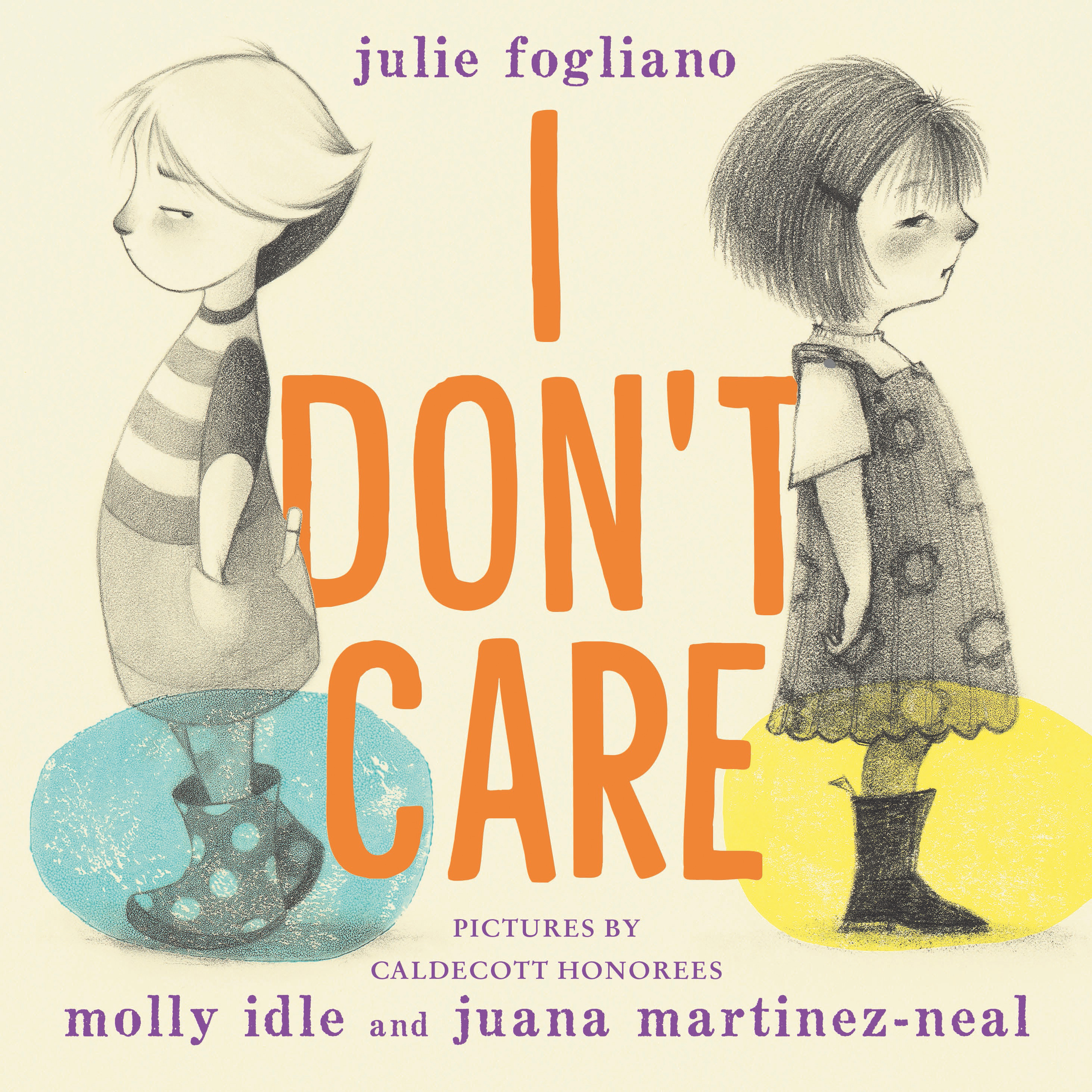 Molly Idle is the author and illustrator of the Caldecott Honor book Flora and the Flamingo. She is also the author/illustrator of Tea Rex, Pearl, Coral and Witch Hazel. Idle lives with her fabulous family in Tempe, Ariz.--where she can most often be found with an espresso in one hand and a pencil in the other, scribbling away on her next book.
Molly Idle is the author and illustrator of the Caldecott Honor book Flora and the Flamingo. She is also the author/illustrator of Tea Rex, Pearl, Coral and Witch Hazel. Idle lives with her fabulous family in Tempe, Ariz.--where she can most often be found with an espresso in one hand and a pencil in the other, scribbling away on her next book.
Juana Martinez-Neal is the author and illustrator of the Caldecott Honor book Alma and How She Got Her Name. She also illustrated Tomatoes for Neela by Padma Lakshmi; Fry Bread: A Native American Family Story by Kevin Noble Maillard, which won a Robert F. Sibert Medal; and La Princesa and the Pea by Susan Middleton Elya, for which she won a Pura Belpré Illustrator Award. Martinez-Neal lives in Connecticut with her family.
Here, Idle and Martinez-Neal discuss I Don't Care (Neal Porter Books), a picture book written by Julie Fogliano and illustrated by both artists. Below, the friends talk about how their "best-friendshipness" helped them develop two characters who grow from not caring about each other at all to caring quite a lot.
 |
|
| Molly Idle | |
One story, two characters, two artists. Tell us how this project came about.
Molly Idle: Neal [Porter, the book's editor] sent me the first half of Julie's manuscript which starts:
i really don't care what you think of my hair
or my eyes or my toes or my nose
i really don't care what you think of my boots
or if you don't like my clothes
The "i" and "you" immediately put me in mind of a conversation between two people who, at first glance, seem very different, but who are very much alike. And I thought, That's me and Juana! Then I thought how wonderful it could be if each of us drew upon our individual perspectives to actually draw our friendship.
Juana, this is awful but I can't remember if I asked you first if you'd be willing to collaborate, or if I asked Neal and Julie [Fogliano] through Steve [Malk, Idle and Fogliano's literary agent] if they'd be okay with us co-illustrating, and then asked you. I just remember hope, hope, hoping that you'd say yes.
 |
|
| Juana Martinez-Neal | |
Juana Martinez-Neal: I'm the type of person who goes by her first reactions and wanted to scream, "Yes!" But this time, I paused. I was nervous. Who wouldn't jump on the opportunity to do something new and fun with their best friend? But I was afraid of breaking our friendship in the process of bookmaking. I'm glad I shyly texted, "Sure."
How did your process work?
Idle: We agreed that the first thing that we needed to do was to decide who "didn't care" about what. There was a line or two that each of us felt a particularly strong connection to, so we assigned ourselves those parts of the conversation and worked outwards from those to decide which character was speaking. Once we had the text divvied up, we started thumb-nailing sketches.
Martinez-Neal: At this stage, we each had already designed our characters. We knew what they looked like, and most definitely knew how they would act and react in different situations, so we moved to thumbnails. Working on the first round went very fast and, I have to say, was a super fun stage of the process. It was all about emotion, cadence, pattern and rhythm. I tackled it with no hiccups and passed them on to Molly. She had new ideas. We ended up having a third pass where we took from round one and two and added new beats that fit better with the book.
Idle: Then it was time to make the finished art. Juana is an amazing painter. Colored pencils are my medium of choice. But we wanted to be on equal footing when it came to making the art. Like Julie writes in the book, "i really do care that you always play fair." We decided to create the characters with graphite, a medium we both feel equally at home with. That left us free to focus on the collaborative process of co-illustrating--which was new to both of us! Stepping out of one's comfort zone can be scary, but it's much less scary when you're with a friend.
Martinez-Neal: We are both traditional artists. Since we were opting to use graphite only, the paper we selected was an important decision. We went over many descriptions of different papers to consider weight, texture and color. We each kept a list of our favorites that we exchanged and ordered them all. As the besties that we are, we chose the same paper.
As for adding some color to the pieces, we wanted to keep it simple, so we each picked our favorite color. Molly used teal. I went with yellow. The overlapping of both gave us the green that grows throughout the book representing their growing appreciation and love for each other, much like it happens in real life.
How long have you known each other? Do you feel that this project brought you closer together?
Idle: Sixteen years this fall. Can it really be 16 years? Yes, because my boys were two years old and two months old at the time. Juana's boys were three and one. It was so exciting to meet someone who was not only an incredible artist, but also a new mom. The first thing I asked her was, "Does it get easier?" Juana looked me straight in the eyes and said, "No." Artistic talent and unflinching honesty? I knew in that moment I wanted to be her friend.
Martinez-Neal: Sometimes people come into our lives and make them so much richer and better. These fortuitous moments change the course of our life forever, make us better humans. That's how meeting Molly feels to me. I absolutely feel that our best-friendshipness has changed while making I Don't Care. It was scary at the beginning but so worth it. This book could have broken us, but it just made us stronger friends and better bookmakers too.
Did working with a partner change your artistic process in any way?
Martinez-Neal: I knew that Molly and I were both planners, but making the book showed me how good of a planner and organizer Molly is. Thanks to her, we limited the amount of art trading to a minimum. When I work, I get lost in (and sidetracked by) the emotions of the book and each spread. I could forget the big picture and deadlines. These art swaps kept us focused and on a schedule.
Idle: I may be the queen of planning, but you, Juana, are the queen of getting things done. I can get so hung up on planning the minutiae of how best to do something that I put off doing anything. Working together--seeing how fearlessly you dive into a piece--helped get me out of my head, into my heart and onto the page.
What do you hope readers will learn from this story?
Martinez-Neal: It is my hope that readers learn that to love a friend is to embrace them as they are.
Is it fair to expect another collaboration in the future? I'm afraid this book has made me greedy.
Martinez-Neal & Idle: We're so excited to say that we've just signed on to create two more stories together with Neal Porter Books at Holiday House. --Jaclyn Fulwood, blogger at Infinite Reads
Book Candy
Book Candy
"Have yourself a merry little mystery: 12 cozy mysteries fit for the holidays," courtesy of the New York Public Library.
---
"Why does Santa Claus say 'Ho Ho Ho?' " Mental Floss investigated.
---
Merriam-Webster shared several new additions to the Scrabble Dictionary that will "mean newly playable words in Scrabble."
---
John Farmer of Aurora, Colo., won the 40th annual Bulwer Lytton Fiction Contest for writing "an atrocious opening sentence to the worst novel never written."
Great Reads
Rediscover: Marijane Meaker
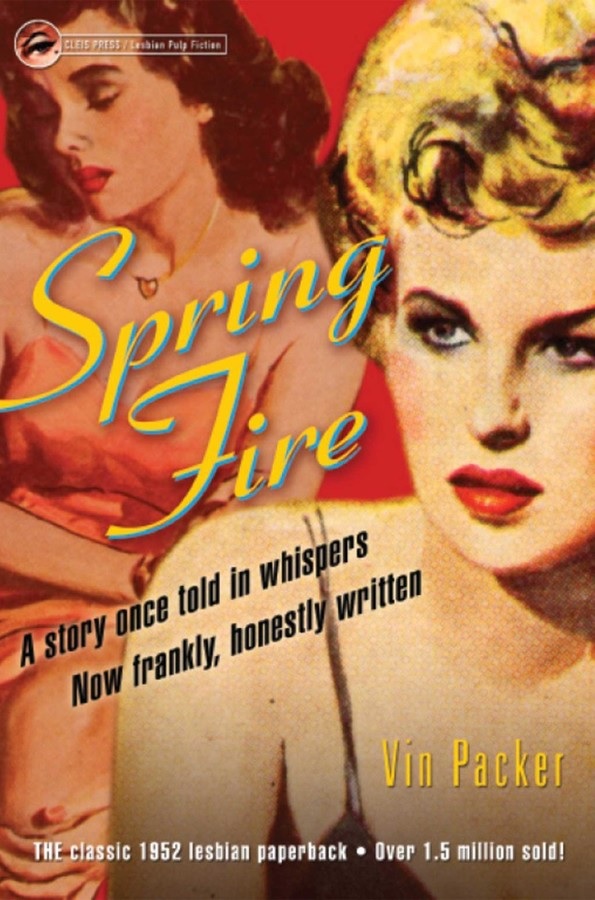 Marijane Meaker, "a versatile and prolific author whose 1952 novel, Spring Fire, was among the first lesbian-themed paperback originals and sold so briskly that it jump-started the genre of lesbian pulp fiction," died November 21 at age 95, the New York Times reported. Meaker wrote dozens of books in multiple genres under several pen names. As M.E. Kerr, she wrote pioneering YA novels. As Ann Aldrich, she wrote nonfiction books chronicling lesbian life in Greenwich Village and beyond, including We Walk Alone (1955) and We, Too, Must Love (1958). As Mary James, she wrote quirky books aimed at younger children, like Shoebag (1990). Her books under her own name included Highsmith: A Romance of the 1950s (2003), about her two-year relationship with the author Patricia Highsmith.
Marijane Meaker, "a versatile and prolific author whose 1952 novel, Spring Fire, was among the first lesbian-themed paperback originals and sold so briskly that it jump-started the genre of lesbian pulp fiction," died November 21 at age 95, the New York Times reported. Meaker wrote dozens of books in multiple genres under several pen names. As M.E. Kerr, she wrote pioneering YA novels. As Ann Aldrich, she wrote nonfiction books chronicling lesbian life in Greenwich Village and beyond, including We Walk Alone (1955) and We, Too, Must Love (1958). As Mary James, she wrote quirky books aimed at younger children, like Shoebag (1990). Her books under her own name included Highsmith: A Romance of the 1950s (2003), about her two-year relationship with the author Patricia Highsmith.
In 2003, Meaker told NPR: "I like pseudonyms. I like disguises. I've always hated the name Marijane. And I think the idea that you can name yourself is interesting." Another reason for the strategy was that when she arrived in New York she couldn't get an agent, and so she became one, with a roster of clients that consisted of her pseudonymous selves. "All of my clients were me," she recalled. "And I would take people out to lunch and tell them about my clients. And nobody knew that I was all my clients."
"But the work that put her on the map and may have had as much impact as any of the others was Spring Fire, published by Gold Medal Books under the name Vin Packer, which Ms. Meaker later used for a series of suspense novels," the Times wrote. The book, which is said to have sold 1.5 million copies, was about a college freshman who falls in love with one of her sorority sisters and "spoke to a significant segment of women who, in the early 1950s, were not seeing themselves in fiction." Meaker was uncomfortable with the ending of Spring Fire. The Times noted that the Postal Service then "was on the lookout for anything that seemed to glorify what its censors thought of as perversion. So publishers made sure she and other lesbian writers gave their stories unhappy endings."
"Which," said Robin Talley, a queer author of YA books, "is why in Spring Fire, one of the women in the central romance winds up in an asylum and the other becomes straight and forgets she ever liked girls to begin with.... Still, Spring Fire and the novels it influenced were what caused a whole generation of queer women to see themselves represented for the first time." Spring Fire is available in paperback from Cleis Press ($17.95).
| Advertisement The Primal of Death Must Be Defeated |


